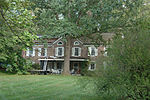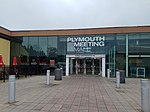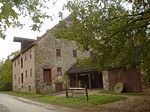Oak Lane Day School
Oak Lane Day School, located in Blue Bell, Pennsylvania, was an independent school founded in 1916 which served preschool and elementary-aged children, which also operated an eight-week children's camp program in the summer. The school's stated mission was to honor each child's individuality in a setting that fostered intellectual, creative, academic and personal growth. Oak Lane placed an emphasis on art and art history, music, and drama. Also included in its academic curriculum were language arts (reading and writing), math, physical education, science and social studies. From 1965 until closure in June 2010, the school's 30-acre (12 ha) country-like campus included a stream, pond, woods, meadows, specimen trees and animal life of all kind which supported environmental studies.
Excerpt from the Wikipedia article Oak Lane Day School (License: CC BY-SA 3.0, Authors).Oak Lane Day School
Whitpain Township
Geographical coordinates (GPS) Address Nearby Places Show on map
Geographical coordinates (GPS)
| Latitude | Longitude |
|---|---|
| N 40.1293 ° | E -75.2579 ° |
Address
19422 Whitpain Township
Pennsylvania, United States
Open on Google Maps









